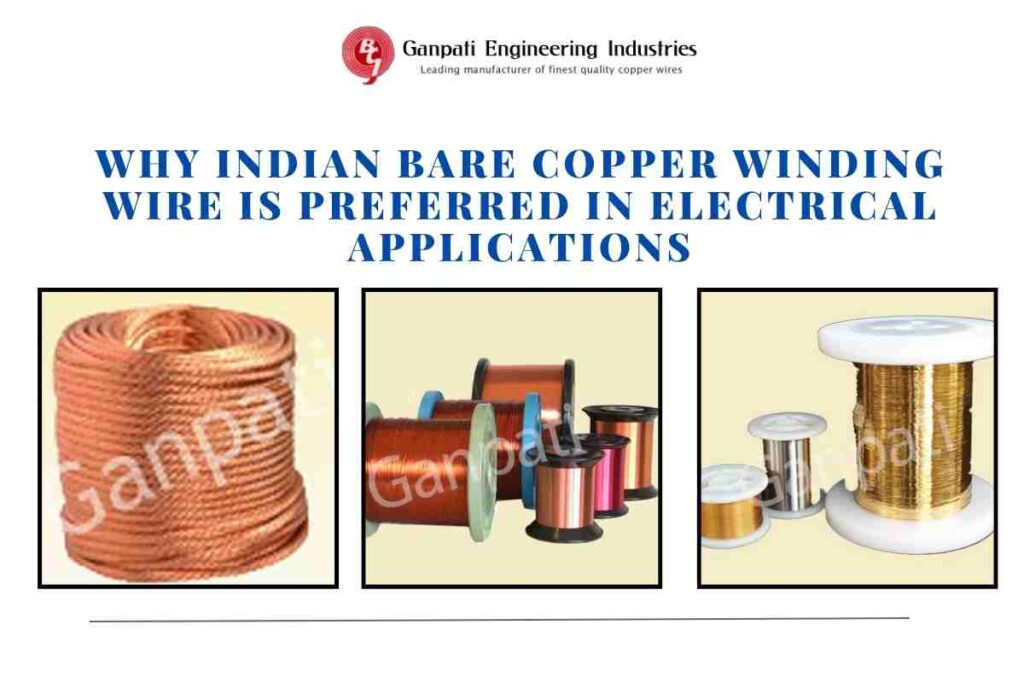
Copper has long been a staple in the world of electrical engineering, and when it comes to winding wires, bare copper stands out for its reliable performance. In India, the production of these wires has reached impressive levels, thanks to advanced manufacturing techniques and a focus on quality. This blog explores the reasons behind the preference for Indian Bare Copper Winding Wire in various electrical setups. Drawing from insights by academic experts in materials science and electrical engineering, we’ll straightforwardly look at its key advantages.
Experts like those from materials research institutions emphasize that copper’s natural properties make it ideal for conducting electricity efficiently. In electrical applications, where smooth current flow is essential, bare copper winding wire ensures minimal energy loss. This is particularly true for products made in India, where manufacturers adhere to strict standards to produce wires that meet global demands.
Superior Conductivity
One of the main reasons bare copper winding wire is chosen is its exceptional ability to conduct electricity. Copper ranks just behind silver in conductivity among metals, making it a top choice for applications that require efficient power transmission.
Why Conductivity Matters in Electrical Systems
In motors and transformers, high conductivity means less resistance, which translates to better performance. Academic studies in electrical engineering highlight how bare copper allows for tighter windings without overheating, improving overall efficiency. For instance, in high-voltage setups, this property ensures stable operation over long periods.
Indian manufacturers enhance this by using high-purity copper, often exceeding 99.9% purity levels. This results in wires that perform reliably in demanding environments, such as industrial machinery. The natural conductivity of copper reduces the need for additional materials, keeping designs simple and effective.
Durability and Longevity
Bare copper winding wire is known for its strength and ability to withstand daily wear. Unlike other materials, copper maintains its integrity even under stress, making it a preferred option for long-term use.
Resistance to Environmental Factors
Experts in metallurgy point out that copper’s natural resistance to corrosion helps it last longer in humid or exposed conditions. This is crucial in electrical applications where wires might face varying temperatures or moisture. Indian production processes often include annealing, which softens the wire for better flexibility while preserving its toughness.
In practical terms, this durability means fewer replacements and consistent performance. For example, in generators, bare copper windings handle thermal expansion well, preventing cracks or failures over time. This reliability is a key factor why engineers opt for it in critical systems.
Versatility in Applications
The adaptability of bare copper winding wire makes it suitable for a wide range of electrical uses, from small devices to large-scale installations.
From Motors to Transformers
In electric motors, the wire’s malleability allows for precise winding, which is essential for smooth rotation and power output. Academic research in electromagnetism shows that copper’s properties enable compact designs without sacrificing efficiency. Transformers benefit similarly, where the wire facilitates effective energy transfer between circuits.
India’s role as a major producer adds to this versatility, with wires tailored for specific needs like submersible pumps. For instance, companies like Ganpati Engineering Industries offer submersible winding wires that feature high-quality copper conductors insulated for water resistance, providing excellent performance in pumps with low maintenance and energy efficiency. These applications demonstrate how bare copper fits seamlessly into diverse setups.
Use in Renewable Energy Systems
With the growth of solar and wind energy, bare copper winding wire plays a vital role in inverters and generators. Its high conductivity ensures minimal loss during energy conversion, supporting sustainable practices. Experts note that in these systems, the wire’s ability to handle fluctuating loads makes it indispensable.
Indian exporters contribute by supplying wires that meet international certifications, ensuring compatibility worldwide. This versatility extends to automotive electronics, where compact and reliable wiring is key.
Quality Standards in Indian Manufacturing
India has become a hub for high-quality bare copper winding wire, thanks to rigorous manufacturing standards that align with global best practices.
Adherence to International Norms
Manufacturers in India follow standards like those from the International Electrotechnical Commission, ensuring wires have a consistent diameter and purity. This attention to detail results in products that perform predictably in electrical applications. Academic experts in quality control praise these standards for reducing variability and enhancing safety.
As an Indian Copper Winding Wire Exporter, many firms ship to global markets, maintaining high levels of craftsmanship. Processes include precise drawing and testing for conductivity, which guarantees top-notch output. This commitment to quality builds trust among engineers and industries alike.
Innovation in Production Techniques
Modern techniques in India, such as advanced annealing and stranding, improve the wire’s properties. These innovations allow for customized solutions, like finer gauges for delicate electronics. Research in materials engineering supports these methods, showing they enhance overall wire performance without compromising strength.
Exporters focus on eco-friendly practices, using recycled copper where possible to sustain resources. This forward-thinking approach ensures that Indian wires remain competitive and preferred.
Economic Benefits
Choosing bare copper winding wire from India offers clear economic advantages, balancing cost with performance.
Cost-Effectiveness Over Time
While initial costs might seem standard, the long lifespan and efficiency of copper reduce overall expenses. Experts calculate that lower energy losses in systems using copper windings lead to savings in electricity bills. In large-scale operations, this adds up significantly.
Indian production scales efficiently, keeping prices accessible without cutting corners on quality. This makes it an economical choice for both small businesses and major industries.
Support for Global Supply Chains
As exporters, Indian companies provide a reliable supply, helping projects stay on schedule. The affordability, combined with high standards, means better value for international buyers. Academic analyses in supply chain management highlight how this stability fosters growth in the electrical sectors worldwide.
Conclusion
In summary, Indian Bare Copper Winding Wire is preferred in electrical applications due to its superior conductivity, durability, versatility, high-quality manufacturing, and economic benefits. Backed by academic expertise, these factors make it a confident choice for engineers seeking reliable solutions. Whether in motors, transformers, or renewable systems, its performance stands out. As India continues to excel in this field, the future looks bright for these essential components, ensuring efficient and sustainable electrical systems everywhere.




